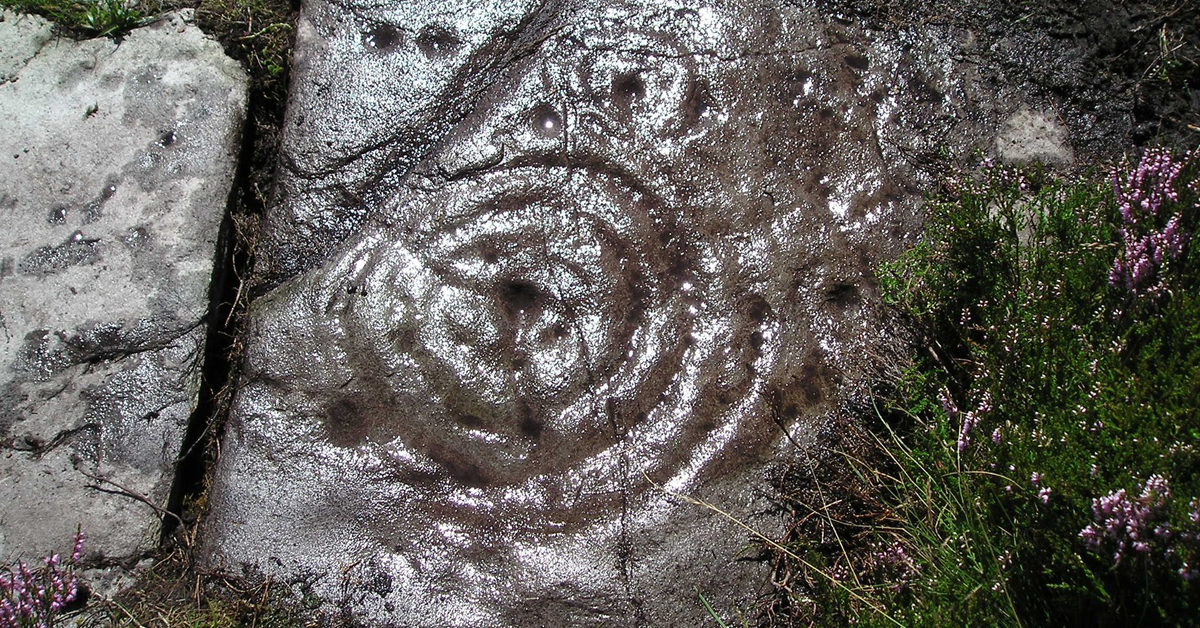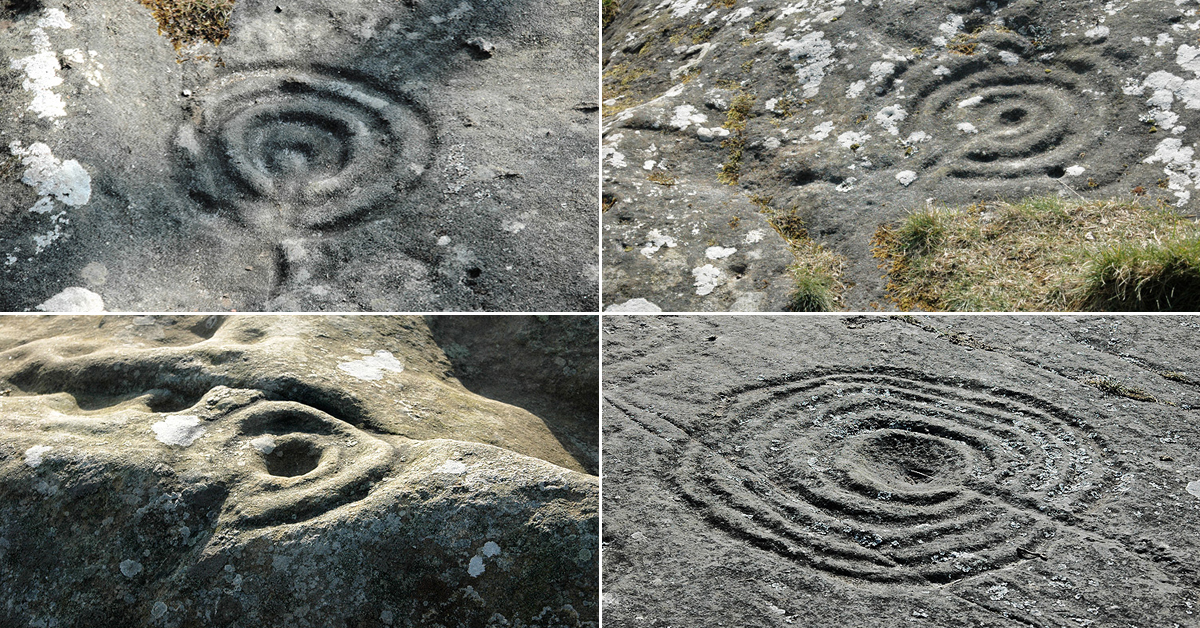


 Photograph: George Currie
Photograph: George Currie
An online article in the guardian reveals how prehistoric rock engravings have been discovered by an amateur archaeologist. Archaeology enthusiast George Currie found them during one of his regular visits to Perthshire in Scotland, the prehistoric rock engravings have been described as a phenomenal contribution to the understanding of Britain’s earliest artworks.
#Prehistoric open-air cup & ring #rockart #carvings #Northumberland https://t.co/GxK1Z6RV4P #archaeology #Neolithic pic.twitter.com/X3SNIbeUvH
— Bradshaw Foundation (@BradshawFND) February 19, 2016
The rock engravings feature the ‘cup mark’ often found in rock art petroglyphs throughout Britain, as well as across Europe. The ‘cup mark’ is a circular shallow depression. These were often carved either in isloation, or scattered, or in patterned groups which sometimes included grooves, grooved rings, gapped circles, arcs and penannulars. Academics have offered various theories as to the meaning of the rock art which include territorial markers, astronomical signs, symbols of fertility or astronomical signs.
 Examples of the ‘cup mark’ motif in rock art carvings from Northumberland
Examples of the ‘cup mark’ motif in rock art carvings from Northumberland
The finds are to be included in the biggest research project into British prehistoric rock art. The five-year, £1m study begins in 2017 under the leadership of Dr Tertia Barnett, and hosted by Historic Environment Scotland (HES). Dr Tertia Barnett, an honorary fellow of the University of Edinburgh, described how rock art is “relatively undervalued and little known”, “This project is very exciting.”
Speaking about finding ancient artworks that no one has seen for thousands of years, George Currie said “It’s quite a privilege.” He believes there is much more art yet to be discovered.
To read the full article:
https://www.theguardian.com/science/2016/sep/17/rock-art-amateur-archaeologist-scotland
More on rock art and prehistory in Britain:
http://www.bradshawfoundation.com/british_isles_prehistory_archive/index.php
by Bradshaw Foundation
Monday 04 December 2023
by Bradshaw Foundation
Friday 30 June 2023
by Bradshaw Foundation
Thursday 06 April 2023
by Bradshaw Foundation
Thursday 24 November 2022
by Bradshaw Foundation
Tuesday 27 September 2022
by Bradshaw Foundation
Thursday 08 September 2022
by Bradshaw Foundation
Tuesday 19 July 2022
by Bradshaw Foundation
Monday 06 June 2022
by Bradshaw Foundation
Friday 11 March 2022
by Bradshaw Foundation
Wednesday 02 March 2022
by Bradshaw Foundation
Thursday 26 August 2021
by Bradshaw Foundation
Monday 16 August 2021
by Bradshaw Foundation
Tuesday 06 July 2021
by Bradshaw Foundation
Thursday 06 May 2021
by Bradshaw Foundation
Thursday 06 May 2021
by Bradshaw Foundation
Tuesday 16 March 2021
by Bradshaw Foundation
Monday 04 December 2023
by Bradshaw Foundation
Friday 30 June 2023
by Bradshaw Foundation
Thursday 06 April 2023
by Bradshaw Foundation
Thursday 24 November 2022
by Bradshaw Foundation
Tuesday 27 September 2022
by Bradshaw Foundation
Thursday 08 September 2022
by Bradshaw Foundation
Tuesday 19 July 2022
by Bradshaw Foundation
Monday 06 June 2022
by Bradshaw Foundation
Friday 11 March 2022
by Bradshaw Foundation
Wednesday 02 March 2022
by Bradshaw Foundation
Thursday 26 August 2021
by Bradshaw Foundation
Monday 16 August 2021
by Bradshaw Foundation
Tuesday 06 July 2021
by Bradshaw Foundation
Thursday 06 May 2021
by Bradshaw Foundation
Thursday 06 May 2021
by Bradshaw Foundation
Tuesday 16 March 2021
Friend of the Foundation











